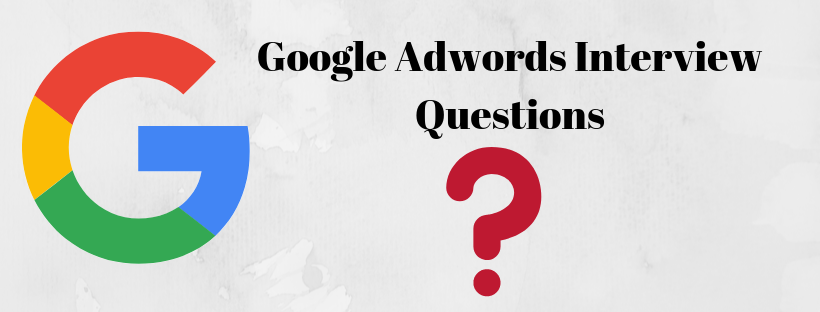Should I learn Google Ads or SEO first?
This is a common question among business owners who want their company website to rank high in search engines like Google.
Deciding which of these two digital marketing strategies to prioritize can be difficult, but by understanding their key differences, you can make an informed decision.
In this blog post, we’ll dive deep into the world of search engine optimization and Google’s advertising platform to help you make an informed decision.
Comprehending the disparities between these two digital marketing tactics can facilitate you in selecting the most suitable strategy for your online advertising objectives.
Studies show that combining both channels can yield even better results, so let’s explore whether learning SEO or Google Ads first is the right move for your business.
Understanding SEO and Google Ads
Before delving into the specifics of which approach to tackle first, let’s review the fundamentals.
Defining SEO (Search Engine Optimization)
SEO or Search Engine Optimization, is a long-term digital marketing strategy that focuses on improving your website’s visibility in organic search results.
This involves optimizing site structure, creating high-quality content, and earning backlinks from authoritative websites – all with the goal of making search engines love optimized sites.
Explaining Google Ads (Pay-per-click advertising)
Google Ads formerly known as AdWords, is Google’s advertising platform where businesses can create targeted ads to appear on search engine results pages (SERPs) and other partner sites.
You only pay when someone clicks on your ad (yep, that’s why it’s called pay-per-click.), giving you control over your online advertising budget.
The Benefits of Learning Google Ads First
If quick wins are what you’re after, then TopClickJoe is one place you can learn about Google Ads whose benefits would be right up your alley.
- Increase Visibility: Your ads will show at the top of SERPs immediately upon launching a campaign. No need to wait for those pesky algorithms to catch up.
- Fine-Tune Targeting: Create specific ad groups targeting keywords relevant to your business. This way, you’ll reach potential customers who are actively searching for products/services like yours.
- Fast ROI: With Google Ads, you can generate revenue quickly by driving traffic to your site and converting visitors into customers. Cha-ching.
The Advantages of Prioritizing SEO Efforts
For those who prefer a longer-term approach, SEO is an ideal solution to boost long-term growth.
- Sustainable Results: A higher Google ranking achieved through SEO efforts will remain consistent over time, unlike paid ads that disappear once the budget runs out.
- Credibility Boost: Organic search results are often perceived as more trustworthy by users compared to sponsored listings. Who doesn’t want their business seen as credible?
- Better User Experience: An optimized website not only ranks better but also provides an improved experience for users – making them more likely to stick around and convert into customers.
Combining Both Channels – Maximizing SERP Real Estate
Rather than settling for one approach, why not have it all?
Combining both channels allows you to reach wider audiences effectively while testing consumer responses before committing resources towards optimization strategies based solely upon initial findings from one channel alone.
- Create a comprehensive digital marketing plan that includes both organic (SEO) and paid (Google Ads) tactics for maximum exposure in SERPs.
- Start with keyword research
- Develop high-quality content
- Optimize on-page elements
- Launch targeted PPC campaigns
- Continuously monitor and adjust your campaigns based on data-driven insights to ensure optimal performance.
Key Takeaway: This section explains the basics of SEO and Google Ads, highlighting their benefits and advantages. Learning Google Ads can lead to quick wins while prioritizing SEO efforts can provide sustainable results. Combining both channels in a comprehensive digital marketing plan is recommended for maximum exposure in SERPs.
The Benefits of Learning Google Ads First
Are you a proprietor who desires your organization’s site to appear high in search engines such as Google?
If so, you might be wondering whether you should learn SEO or Google Ads first.
While both are important, this section will enlighten you on why learning Google Ads first might be the right move.
Immediate Exposure on Search Engine Result Pages
If you’re craving instant gratification and rapid results for your business website, Google Ads is your new best friend.
With Google’s advertising platform, it’s possible to skyrocket straight to the top of SERPs.
Your ads can appear above organic search results, granting your site immediate visibility, like a VIP pass at a concert.
Customizable Ad Targeting Options
No more shooting in the dark.
Google Ads lets you tailor campaigns specifically for your audience with laser-like precision.
Bid farewell to wasted impressions.
Generating Revenue Quickly
If time is money, then Google Ads works like an ATM machine.
It helps generate revenue faster than waiting in line at Starbucks during rush hour.
Actionable Steps:
- Create a Google Ads account.
- Analyze keywords relevant to your business using tools such as Keyword Planner Tool.
- Determine which type of campaign suits you: Search Network, Display Network, or both?
- Create compelling ads that make users click like they’re playing Whac-A-Mole.
- Set aside a sum for your campaign, but be prepared to adjust it depending on how well the venture performs.
- Analyze and optimize: Use the data from your Google Ads account to fine-tune campaigns for maximum ROI. Rinse and repeat.
Remember, while learning Google Ads first can provide quick wins, it shouldn’t be your only digital marketing strategy.
A well-rounded approach is key to long-term success. But hey, who doesn’t love some instant gratification?
Key Takeaway: Learning Google Ads first can provide instant gratification and rapid results for your business website, with customizable ad targeting options and the ability to generate revenue quickly. To get started, create a Google Ads account, analyze relevant keywords using tools like Keyword Planner Tool, determine which type of campaign suits you best, create compelling ads that make users click, set a budget (but don’t be afraid to adjust it), analyze and optimize campaigns for maximum ROI.
The Advantages of Prioritizing SEO Efforts
Are you an entrepreneur seeking to get your enterprise website placed prominently on search engines such as Google?
If so, you may be wondering whether you should learn SEO or Google Ads first.
While both can be effective, focusing on SEO can be a wise move for long-term success.
Here’s why:
Long-term cost-effectiveness compared to PPC advertising
With SEO, you’re not constantly shelling out cash for every click.
Instead, invest time and effort into creating an optimized site that search engines love and reward with higher rankings.
This means you can achieve sustainable online success without breaking the bank on ads.
Building trust among potential customers through higher organic rankings
Organic search results are more trusted than ads.
Achieving high organic rankings signals credibility and authority in your niche.
According to a study by BrightEdge, 53% of website traffic comes from organic searches, meaning users are more likely to engage with content found naturally rather than paid advertisements.
Creating high-quality content that addresses users’ needs
People love content that helps them solve their problems.
By diving deep into keyword research, user intent analysis, and competitor insights, you can create killer content that addresses those pain points head-on.
This not only helps your audience but also signals to Google that your site is relevant and valuable.
- Action Step #1: Use tools like Ahrefs Keywords Explorer or Moz Keyword Explorer to identify high-traffic, low-competition keywords.
- Action Step #2: Analyze the top-ranking pages for those keywords and determine what makes them stand out. Then create content that’s even better.
- Action Step #3: Optimize your content with on-page SEO best practices like proper header tags, keyword-rich meta descriptions, and internal linking.
Bonus Tip: Don’t forget about technical SEO.
Ensure your site loads quickly (check out Google PageSpeed Insights), is mobile-friendly (check out Google’s Mobile-Friendly Test tool), and has a clean site structure for easy crawling by search engine bots.
In short, SEO is your ticket to sustainable online success.
By prioritizing SEO efforts, you can achieve higher Google rankings, build trust among potential customers, and create valuable content that addresses users’ needs.
Considering the long-term benefits of SEO for your digital marketing strategy, it is wise to prioritize learning SEO over Google Ads.
Key Takeaway: Prioritizing SEO efforts over Google Ads can lead to long-term cost-effectiveness, building trust among potential customers through higher organic rankings and creating high-quality content that addresses users’ needs. By using tools like Ahrefs Keywords Explorer or Moz Keyword Explorer for keyword research and optimizing content with on-page SEO best practices, businesses can achieve sustainable online success without breaking the bank on ads.
Combining Both Channels – Maximizing SERP Real Estate
Why settle for one when you can have the best of both worlds?
Utilize SEO and Google Ads together, like a digital marketing superhero duo, to dominate search engine results pages (SERPs).
By implementing an integrated SEO and PPC strategy, you can diversify your online presence and cover all bases – organic traffic from great SEO efforts and paid clicks from well-targeted Google Ads campaigns.
Use insights gained from each channel to inform the other.
For example, high-performing keywords in your Google Ads campaign could be incorporated into your content creation plan for better organic rankings.
Experiment with different ad copy variations on Google’s advertising platform to test consumer responses to specific keywords or phrases.
Leverage data gathered through this process to optimize future ads and make more informed decisions about keyword targeting in both channels.
This will save you time and money while ensuring that every piece of content gets maximum exposure.
How to Implement a Combined SEO and Google Ads Strategy
- Analyze your target audience: Understand their preferences, pain points, and online search behavior. This will help you create relevant ads and high-quality content that resonates with them.
- Create compelling ad copy: Write engaging Google Ads that entice users to click while staying true to your brand voice.
- Prioritize high-performing keywords: Use tools like Ahrefs, Moz Pro, or even the free Google Keyword Planner Tool to identify top-performing keywords in both organic search results and paid campaigns.
- Optimize website content: Incorporate those valuable keywords into your site’s meta tags, headings, URLs, image alt text – basically, anywhere it makes sense without sounding forced or unnatural. Remember – great SEO is all about user experience.
- Analyze performance metrics such as CTR, CPA, conversion rate, and bounce rate to optimize both SEO and Google Ads campaigns for maximum efficiency.
- Iterate and improve: Based on performance data, make necessary adjustments to both SEO and Google Ads campaigns. Rinse and repeat for continuous improvement.
It’s time to put the plan into motion. Harness the power of combining SEO and Google Ads in your digital marketing strategy today.
Key Takeaway: Maximize your online presence by combining SEO and Google Ads. Use insights from each channel to inform the other, prioritize high-performing keywords, optimize website content, monitor performance metrics, and iterate for continuous improvement. By doing so you can dominate search engine results pages (SERPs) like a digital marketing superhero duo.
Factors to Consider When Choosing Which Strategy to Learn First
As a business owner, you want your company website to rank high in search engines like Google.
But with so many digital marketing strategies out there, it can be challenging to decide where to start. In this blog post, we’ll explore whether you should learn SEO or Google Ads first and what factors to consider when making that decision.
Assessing Business Goals and Desired Outcomes
The first step in deciding which strategy to learn first is to assess your business goals and desired outcomes.
If you’re looking for quick results, then Google Ads may be the way to go.
With Google’s advertising platform, you can show display ads to your target audience and start driving traffic to your website almost immediately.
However, if you’re looking for long-term growth, SEO could be the winner for you.
Search engines love optimized sites, and SEO is a great long-term solution for improving your website’s visibility and ranking higher in search engine results pages.
Evaluating Available Budget for Digital Marketing Campaigns
Another factor to consider is your available budget for digital marketing campaigns.
PPC models like Google Ads require payment for each click, so the budget should be taken into consideration when deciding which approach to take.
This can add up quickly, especially if you have a limited budget. On the other hand, SEO offers a cost-effective approach in the long run without additional expenses per visitor.
While it may take longer to see results, the investment in SEO efforts can pay off in the long run.
Determining Target Audience Preferences
To effectively reach your target audience, you need to understand their preferences.
Analyze their behavior and preferences by using tools such as Google Analytics, social media insights, or even customer surveys.
This data will guide you on whether they prefer organic search results (hello SEO) or respond better to paid ads (enter Google Ads).
Actionable Steps: Deciding Between SEO & Google Ads Learning Pathways
- Start by listing your business goals and objectives.
- Analyze your available budget for digital marketing campaigns, considering both short-term and long-term investments.
- Determine the preferences of your target audience through research and data analysis.
- Evaluate which strategy aligns best with your findings from steps 1-3.
Pro Tip: Don’t forget that combining SEO & Google Ads can be a powerful approach to maximize online potential. By combining SEO and Google Ads, you can target specific keywords to reach your desired audience, increasing the likelihood of conversions. Reaping the rewards of increased CTRs and conversions is possible when running Google Ads campaigns alongside SEO.
In the end, it’s all about understanding what works best for you and adapting accordingly – there’s no one-size-fits-all solution in this game called digital marketing.
The key is to stay informed, agile, and always ready to learn something new – whether it’s mastering SEO or becoming a Google Ads guru.
Key Takeaway: To decide whether to learn SEO or Google Ads first, assess your business goals and budget for digital marketing campaigns. While Google Ads can provide quick results, SEO is a cost-effective approach for long-term growth in search engine visibility. Determine the preferences of your target audience through research and data analysis to evaluate which strategy aligns best with your findings.
FAQs in Relation to Should I Learn Seo or Google Ads First
Google Ads or SEO: Which One Should You Learn First?
If you have a flexible budget and want immediate exposure, start with Google Ads; but if you prefer long-term cost-effectiveness and building trust among users, focus on SEO.
Why Not Do Both Google Ads and SEO?
Combining both strategies can maximize your online presence by occupying more search engine results pages (SERP) real estate and testing consumer responses to specific keywords or phrases.
How Long Does It Take to Learn Google Ads?
Completing the official Google Ads certification courses takes approximately 15-20 hours, but the time required varies based on individual learning abilities.
Is Google Ads Difficult to Learn?
While there is a learning curve involved, mastering Google Ads becomes easier with practice and utilizing resources like the Google Help Center, tutorials, forums, and blogs for guidance.
Conclusion
SEO or Google Ads first? Here’s what you need to know:
Both SEO and Google Ads can boost your website’s visibility, but which one should you prioritize?
If you’re looking for immediate exposure and have some budget to spare, Google Ads may be the way to go.
But if you’re in it for the long haul and want to build trust with your audience, SEO is the better choice.
Of course, you don’t have to choose just one. Combining both channels can maximize your reach and help you test consumer responses.




